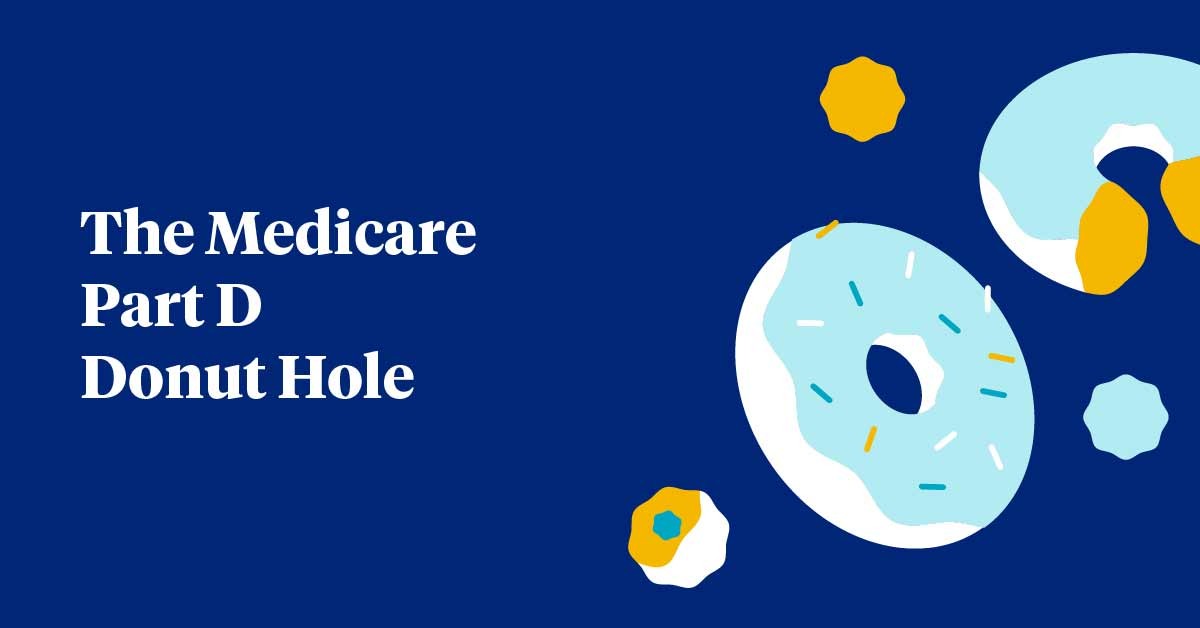



What is the dreaded donut hole? If we’re talking about pastry, we’re describing the missing middle of the ringed donut; but if you are referring to a Medicare Part D prescription drug plan, then the donut hole truly is something to dread—that is, if you are living on a small, fixed income.
So, to what are people referring when they speak of the Medicare Part D donut hole? The donut hole, also known as the coverage gap in Medicare circles, occurs after someone with a Medicare Part D drug plan has hit a certain spending limit on their prescription costs. When that limit is hit, then the costs go up for the person with the Part D plan. So, let’s see exactly how that works.
If there is good news regarding the coverage gap (the donut hole), it is that not everyone will hit it. To enter the dreaded donut hole, the retail costs for one’s medications needs to hit $3,310 or $3,700 for 2017. How are these costs measured?
Each one of your medications has a retail cost. To see that cost, imagine you are taking Grow-a-statin (a made-up medication, to be sure). The retail cost of that medication is $50; however, your Medicare Part D drug plan pays for $30 of that cost, so your copay on your plan is $20. The cost toward the magic number of $3,310 (for 2016) that is recorded is not your copay of $20; instead, it is the entire retail cost of your medication—$50. So now you are $50 closer toward entering the coverage gap. (Note: If your Part D plan has a deductible, and most Part D plans do, the deductible counts toward reaching the coverage gap. So, if your plan in 2016 has a $360 deductible [it will be a $400 deductible in 2017] you have to pay, once you pay it, you will be $360 [or $400] closer to reaching the coverage gap.)
The good news for you is: If that is the only medication you take, you won’t come close to entering the donut hole. After all, twelve months of $50 retail only comes out to $300. You would be $3,010 short of hitting the coverage gap. Of course, the more medications you take, and / or the more expensive the medications, the better chance you have of hitting the dreaded donut hole. (By the way, if you use a good, reputable agent for your Medicare coverage, he or she can help you see if you will hit the coverage gap on your current medications. Regarding choosing a Part D plan, see Which Medicare Part D Drug Plan Is the Best One?)
Once you hit the coverage gap, the costs on your medications will go up. In 2016—after meeting your deductible—you pay 25% of the costs of your medications during the initial coverage portion of your Part D drug plan. Once you hit the coverage gap, your costs shift to 45% (40% in 2017) of the retail costs of your brand name medications and 58% (51% in 2017) of the retail costs of your generic medications . . . until you hit the catastrophic coverage.
As mentioned, the donut hole (the coverage gap) begins when retail costs of $3,310 for 2016 ($3,700 for 2017) have been met. Then, when retail costs for your medications meet $4,850 for 2016 ($4,950 in 2017), your cost sharing on your medications drops to paying the greater of 5% of the retail cost or $2.95 ($3.30 in 2017) for generics and $7.40 ($8.25 in 2017) for all other drugs (name brand and specialty medications). That means that if the retail cost of your medication is $50, in 2016, your catastrophic coverage cost for that medication would be $2.95 (since that amount is greater than 5% of $50, which would be $2.50).
It is important to understand that this cycle of Part D drug costs is an annual cycle, meaning your costs will start over (with the initial coverage phase) on January 1 each year. Because of this, most people who enter the coverage gap never hit the catastrophic coverage phase. However, those who do, are rewarded with lower drug costs through December 31.
To be honest, some people will not be able to avoid the coverage gap. However, some can. One possible way to keep from hitting the coverage gap would be to replace brand name medications with generics wherever you can. By doing so, you may be able to lower your costs to avoid reaching the coverage gap threshold of $3,310 ($3,700 in 2017).
For a few others, there may be another way to avoid the coverage gap. However, since this method is a rarer approach (it won’t apply to most Medicare Part D recipients)—and because it is a trade secret—we won’t go into detail on this one. (Sorry for the tease on this approach.)
If there is any other good news about the dreaded donut hole, it is that the coverage gap is scheduled to be eliminated in 2020. That would mean that after meeting the annual deductible for your medications, your cost of your medications on a Medicare Part D drug plan will simply be 25%, which will apply to everyone. No more donut hole! (Can someone lead a cheer here?)
I held this piece of information till last, because, in dealing with a depressing subject like the dreaded donut hole (coverage gap), I feel it is important to end on a note of hope. So, here’s looking to 2020.
Who really wants to think about dying? Buying life insurance means we must face our…
When it comes to retirement planning, Social Security is one of the most important—and often…
Claeys Group Insurance Services has been named top life insurance agency in Tyler, TX…
This article details upcoming changes to Medicare with the Inflation Reduction Act, or IRA. What…
With the ever-changing changing economic landscape of late, and with many considering retirement at age…
The Donut Hole & Inflation Reduction Act The Inflation Reduction Act, passed by Congress in…
This website uses cookies.
Read More